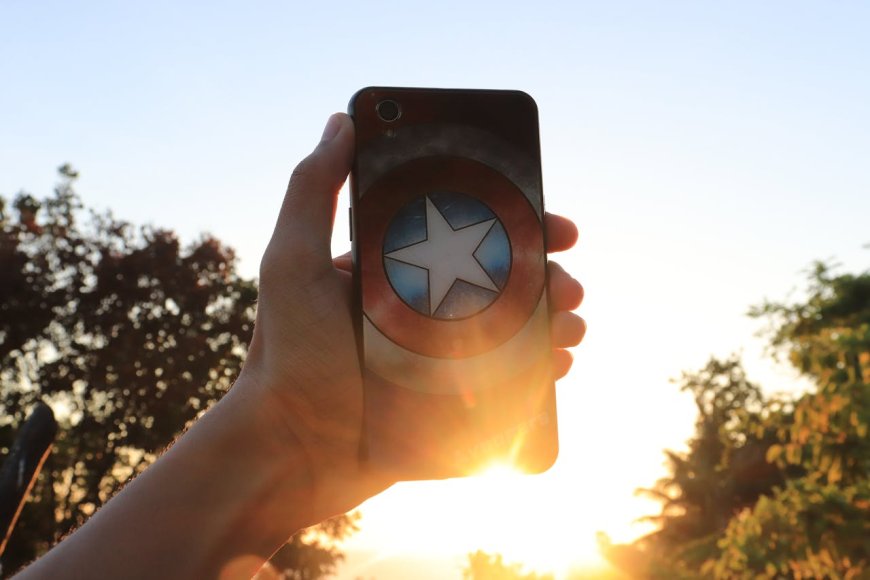Smartphone Safety 101: Preventing Cracked Screens with Ease

A smartphone's screen is vital for usability. It's not just a window to apps and messages; it's a daily essential. Damage can lead to costly repairs, and cracks and scratches degrade the user experience. Protecting the screen ensures longevity and functionality. Simple measures today prevent future frustrations. It’s worth the effort.
Common causes of cracked screens
Dropping the phone is a leading cause. People often forget how fragile screens are. Another common issue is sitting or stepping on the device. Using the phone with dirty or greasy hands can lead to slips. Keeping the phone in a pocket with keys or coins scratches and damages the screen over time.
How do you avoid cracking the phone screen?
Screen Protectors: Your First Line of Defense
Screen protectors are essential for keeping smartphone screens safe. They minimize the risk of scratches and cracks. Tempered glass is popular for its strength and clarity. Easy to apply, they add an extra layer of protection. Cost-effective and widely available, screen protectors should be an immediate purchase for any new smartphone.
Types of screen protectors available
There are three main types of screen protectors: tempered glass, PET film, and TPU plastic. Tempered glass is the most durable and scratch-resistant. PET film offers basic scratch protection at a lower cost. TPU plastic is flexible and self-healing but less rigid. Each type excels in different areas, catering to various needs and budgets.
How to choose the right screen protector for your smartphone
Consider the type of screen protector first. Tempered glass offers top-notch protection. Check the hardness and thickness for durability. Ensure it covers your entire screen and has an anti-fingerprint coating. Look for one that maintains touch sensitivity and clarity. Installation should be easy, and the price should fit the budget.
Protective Phone Cases
Phone cases are essential for protecting a smartphone screen. They absorb shock during drops. High-quality cases provide added grip, reducing the chance of slipping. Durable materials like silicone and polycarbonate are ideal. Some cases even offer waterproof features. A good phone case is a small investment to prevent costly repairs.
Benefits of using a protective phone case
A protective phone case acts as a shield against impacts. It absorbs shocks from accidental drops, reducing the risk of a cracked screen. In addition, it provides additional grip, minimizing slips. Some cases are waterproof, offering extra security. Investing in a durable case can save expensive repair costs. It's a small price for peace of mind.
Features to look for in a quality phone case
A quality phone case should offer robust protection against drops and be made from durable materials like silicone or polycarbonate. Look for a case with a raised edge to protect the smartphone screen. Ensure it has precise cutouts for ports and buttons. Lastly, a good grip is essential to prevent slips.
Safe Handling and Storage Practices
Proper handling often results in damage to a smartphone screen. Always use both hands to hold the phone securely. Avoid placing the phone on uneven surfaces. Store it in a padded pouch or case when not in use. These measures reduce the risk of cracked screens and other potential damages. Safe storage is crucial for device longevity.
Proper ways to handle your smartphone to prevent screen damage
Hold the smartphone with both hands whenever possible. Avoid using the phone while walking or multitasking. Do not place it on the edge of tables or other surfaces where it can easily fall. Keep it away from liquids and extreme temperatures. Always use a firm grip to reduce the chances of dropping it.
Best practices for storing your phone safely
Keep the smartphone away from direct sunlight and extreme temperatures. Store it in a protective case when not in use. Use dedicated compartments in bags to avoid scratches. Avoid placing heavy items on top of it. Ensure it is kept away from liquids to prevent accidental spills.
Repair Options for Cracked Screens
DIY fixing minor cracks involves using clear nail polish or specialized screen repair kits. These can temporarily seal small cracks but aren’t permanent solutions. For extensive damage, professional repair services are advisable. Costs vary depending on the extent of the damage and the smartphone model. Always weigh repair costs against getting a new device.
DIY methods for fixing minor cracks
Clear nail polish can provide temporary relief for minor smartphone screen cracks. Just apply a small amount over the crack and wipe away the excess. Specialized screen repair kits are another option. These typically include adhesives and tools designed for minor fixes. While not permanent solutions, they can delay the need for immediate professional repair.
Professional repair services and costs
Professional repair is often necessary for serious screen damage. This ensures proper fixing and maintains warranty coverage. Costs vary based on the smartphone model and extent of damage, ranging from $100 to $300. It's wise to compare service providers, considering their quality and warranty offerings for the best value. Choose reputable shops with the best cell phone repair parts for reliable repairs.
Conclusion
Maintaining a crack-free smartphone screen is vital. Using screen protectors and sturdy cases greatly reduces damage risk. Handle and store your phone carefully to prevent accidents. DIY fixes can help for minor cracks, but for severe damage, seek professional repair services. Protecting your screen ensures the longevity and optimal functionality of your device.












